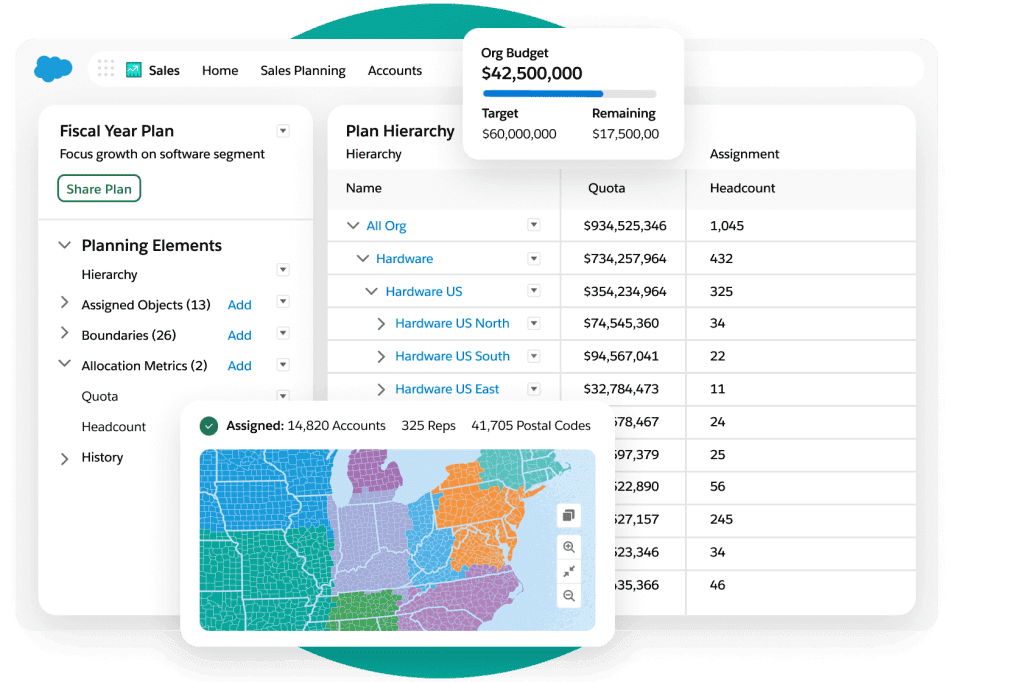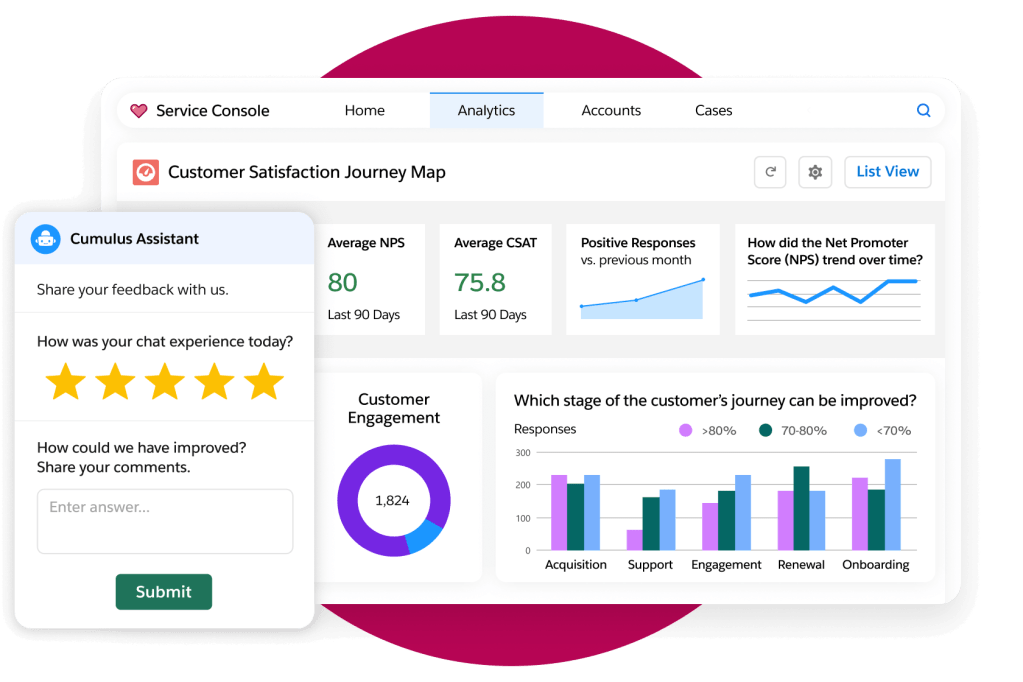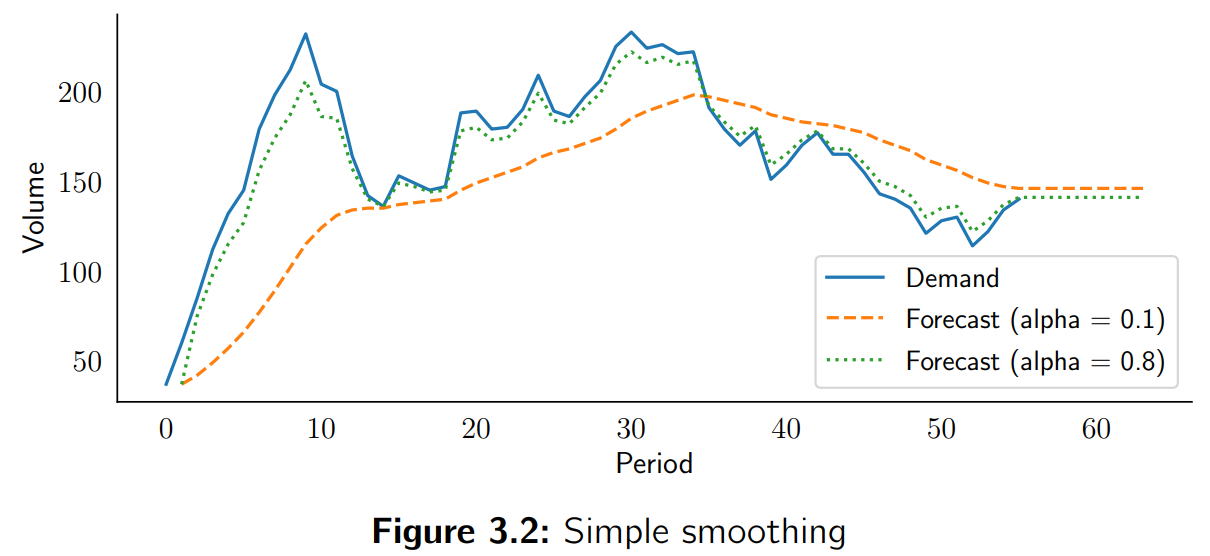Demand forecasting is the process of predicting future demand for a product. It’s about understanding how many units your customers will want to buy and when so you can make sure you have the right amount of inventory to meet their demands.
Overstocking and understocking can be a nightmare for your business. The last thing you want is to run out of inventory halfway through the day. But equally, you’d rather not have thousands of unsold products costing you a fortune to store in an expensive warehouse.
An accurate demand forecast ensures that you always have the right amount of inventory to serve your customers’ needs. This keeps customers happy and saves you money by allowing you to optimise your supply chain and minimise production costs.
Let’s look at a simple demand forecasting example
Imagine this: You’re running a small business selling sunglasses online. The weather has been poor, so you’ve only managed to sell twenty pairs over the last three weeks. You order another twenty pairs of sunglasses to replenish your stock.
Suddenly, summer arrives. Everyone wants a new pair of sunnies — it’s barbecue weather. There’s a rush at your store. You sell your entire stock within minutes. Bummer.
The following year, you’re determined to be prepared. You diligently check the weather forecasts and review your historical sales data to see how many backlogged orders you had last year. You use this data to order 200 pairs of sunglasses. Summer arrives, and you coast through with promising sales figures and no stockouts. Success.
This is the concept of demand forecasting, which uses historical data to predict future sales. It ensures you have the right stock at the right time, helping keep customers happy, avoid stocking issues, and improve your profits.
Why should I use demand forecasting?
Demand forecasting isn’t just a fancy way to predict future sales. It offers dozens of tangible benefits to help you drive major business value. Here are six that are important for you.
1. Demand forecasting and inventory planning
An accurate demand forecast lets you maintain the optimal inventory levels to meet customer demands. It helps you avoid understocking, which can impact sales (and lead to unhappy customers).
This inventory optimisation also reduces the risk of overstocking, which can tie up your hard-earned cash in excess storage space. This is especially handy if you deal with perishable goods, like fruit and veg, with a sell-by date.
2. Budget planning and resource allocation
When you understand how much customers will buy and when you know exactly how much money you need to invest (and where you need to invest it) to meet that demand.
Do you need to hire new equipment? Should you employ a new team member? You may need to make a change to shift patterns to account for temporary spikes on certain days.
When you accurately forecast demand, you can budget and make better financial decisions that decrease costs and allow more effective resource allocation.

If you’re looking for a more effective way to plan budgets and allocate resources, try Salesforce Sales Planning. Discover how Sales Planning can help your business streamline the sales planning process and optimise strategies to achieve better results.
3. Supply chain optimisation
Demand prediction helps you plan your supply chain down to a tee. You can proactively communicate with suppliers to source stock and optimise inventory levels to avoid potentially costly delays.
You can also use your demand forecast to decide which suppliers to build relationships with. If three of your most in-demand summer products come from the same supplier, it’s a good idea to prepare them for a large order during that period next year.
4. Data-backed business decisions
Demand forecasts encourage informed decision-making. If you see a product underperforming, you can decide whether to invest in advertising, change your positioning, or perhaps pull the product entirely. You may also decide to adjust a pricing strategy based on your knowledge or run a sale to drum up interest.
5. Customer satisfaction
No one likes visiting a website and finding their favourite food item isn’t available. When your highest-quality products are always in stock at the right time and place, this benefits the end customer, making it more likely they’ll come back again. This improves customer retention and gives you a real competitive advantage.

You can also use Salesforce Feedback Management to build surveys and reveal insights with AI to gain deeper insights into customer behaviour.
6. Sustainability
Demand forecasting promotes optimal inventory management and better resource allocation, reducing wastage and making your operation more efficient.
This leads to better environmental sustainability — a necessary goal for all businesses today. As a plus, you can also use this as a unique selling point. Win-win.
Demand forecasting approaches
Here are some of the most common strategies you can use to narrow or expand your scope and can help you decide on your overall demand forecasting strategy.
1. Short-term demand forecasting
Looking at demand for a period of less than 12 months. Short-term forecasting helps assess day-to-day demand that you can use to inform marketing efforts.
2. Long-term demand forecasting
Looking at the demand for more than 12 months. Long-term forecasting is excellent for identifying seasonal patterns and strategic expansion opportunities.
3. Macro-level forecasting
This overviews broader market and business economic conditions and can highlight opportunities and threats that may affect demand in your industry.
4. Micro-level forecasting
This type of forecasting takes a granular approach. It explores specific details related to a business or demographic and helps with making precise decisions.
5. Active demand forecasting
This hones in on the goods that customers are actively seeking. It guides marketing strategies and avoids stockouts for in-demand items.
6. Passive demand forecasting
Passive forecasting focuses on products that customers are not buying. The primary goal is for businesses to identify why a product isn’t selling and how they can fix that.
Choosing the right forecasting approach will guide you in selecting one of the many demand forecasting methods, as shown in the examples below.
Demand forecasting methods
Demand forecasting has a straightforward goal. At its core, it’s about predicting what people want, how much they want, and when they want it.
But how exactly do you go about predicting the future? This is where things can get complex because there is no right or wrong way to forecast demand. It all depends on the type of business, the data you have available, and the tools at your disposal.
Let’s look at the different methods demand forecasters use to predict demand.
To keep things simple, we’ve broken them down into quantitative methods and qualitative methods.
Quantitative methods
Quantitative demand forecasting is based on historical data. It involves using numbers and statistics to make future predictions.
Quantitative forecasting can be highly accurate but doesn’t consider unpredictable external factors. For that reason, it’s usually paired with more subjective qualitative forecasts to provide a complete overview.
1. Time series analysis
This is one of the simplest and most common methods of internal business forecasting. It involves using historical data, such as past sales data, to explore patterns over a period of time. It’s a good way to find recurring demand trends, like seasonal fluctuations, that you can use to predict future outcomes.
Time series analysis can be misleading if there are outliers in historical data, so many forecasters use models like moving averages or exponential smoothing to improve accuracy:
- Moving averages involves calculating the average of past data points to eliminate outliers and get a more accurate picture of trends.
- Exponential smoothing is the process of assigning gradually decreasing weights to past data points (i.e., prioritising recent data over data from a long time ago). Here’s author Nicolas Vandeput’s original graph showing this work.

An example of exponential smoothing (orange line) versus actual demand. Source: Nicolas Vandeput)
Time series analysis is a good starting point for short-term forecasts for products with relatively stable demand patterns. However, as this relies on the assumption that future sales forecasting will closely mirror past sales data, it isn’t always reliable on its own.
2. Regression analysis
Regression analysis explores the link between demand and other independent variables, such as weather, marketing spend, price, and market changes. It helps you see how different factors impact customer demand for your products.
For example, you might choose to analyse how many customers visit your restaurant on a rainy day versus a sunny day. Or, you could explore demand for specific menu items in relation to the cost of living.
3. Econometric models
This advanced analytics method involves using a combination of statistical tools and economic theories to produce data-backed demand forecasts.
Crucially, this method can allow you to analyse historical data alongside external factors that can influence demand, such as market changes.
Qualitative methods
Qualitative demand forecasting is based on subjective opinion. This means it can include insights that numbers alone won’t show. It also introduces problems with accuracy and bias, so it’s important to compare your qualitative forecasts with your quantitative to build the complete picture.
1. Expert opinion method (Delphi method)
The Delphi technique relies on the opinions of experts in your sector. It involves commissioning a group of experienced industry leaders to provide insights into market demand.
Typically, the Delphi method process goes something like this:
- You send out a survey to the panel of experts.
- You collect responses and summarise the experts’ opinions.
- You share the summary with your panel for review.
- The process repeats until everyone reaches a consensus.
This method works especially well for taking the pulse of the local market. Experts may have insights into broader trends that your data doesn’t show.
2. Market research
Market research is all about collecting data from your customers. Think of customer survey questionnaires and tabulating the data.
This is a long-term method. Gathering a great deal of data from your customers takes time. So, your best bet is to make this an ongoing strategy that complements your other demand forecasting models.
3. Sales force composite
This method puts your sales team at the helm. It uses their input to forecast demand because they know how your customers feel and what they want.
Ultimately, they are in close contact with your target audience and can provide insights you may have yet to consider.
Demand forecasting technique using machine learning
Artificial Intelligence (AI) is all the rage for both small businesses and large enterprises alike, and demand forecasting is no exception. AI can analyse historical sales data while considering current market trends, competitors, reviews, etc.
This makes the entire process of demand forecasting faster and more accurate. Machine learning algorithms can automate data wrangling and analysis.
They can process information rapidly and identify intricate patterns in enormous datasets in real-time. They can even spot unusual patterns that the human brain can’t identify. And they can do all of this almost instantaneously.
Which demand forecast method should I choose?
Which demand forecast method should you use? The answer is that you don’t have to (and probably shouldn’t) choose just one. In fact, it’s a good idea to build demand forecasts using different methods on an ongoing basis.
Historical sales data is almost always the best place to start. It provides a baseline forecast. If you know exactly how many units you sold during Christmas last year, you can make a valid estimate for how many you’ll sell this year.
However, this historical data ignores external factors, for example:
- What happens if there’s a financial crisis?
- Will you still sell thousands of snowshoes if you have an unusually warm winter?
- Perhaps a new competitor is opening up next door. How will this impact footfall?
With that in mind, the best course is to combine both quantitative and qualitative forecasting methods. This gives you the best of both worlds. You have data as a base point and subjective opinions to manage your expectations.
What factors influence demand forecast accuracy?
One of the primary concerns with demand forecasting is unpredictability. Things don’t always go to plan, and several different elements can impact your forecasting accuracy.
That’s why I think demand forecasts should be an ongoing strategy, and several methods should be used to achieve a more well-rounded prediction.
Here are some of the critical factors that can influence the reliability of your results:
Economic conditions
The economy is always shifting. If national income and spending power fall, sales will, too. It’s important to keep an eye on the broader market. Often, qualitative forecasting is the best way to do so.
If your expert panel reports that the market is becoming more saturated, you can use this to manage your expectations for demand. This can also inform your strategies for marketing and sales. For instance, you could opt to reposition your product or run a promotion to recoup lost demand.
Seasonality
If you run a seasonal brand, you need to factor in how this impacts demand. Selling snow tires? You’re probably not making a killing in the summer because people don’t need that equipment around that time.
You can use this knowledge to reduce inventory during quiet months and ramp up production when demand spikes. This graph shows what we mean. As demand falls during month six, inventory can be reduced to accommodate that.

The correlation between supply and seasonal demand. Source: WareIQ
Data quality and availability
Accurate data equals accurate forecasts. But what happens when your master data isn’t reliable?
Numerous siloed data stores or even a faulty point of sale (POS) system can all lead to inaccuracies in your projections, especially if you’re relying on outdated legacy systems. Refining your data-wrangling processes and consistently upgrading your data systems is important.
Consumer preferences
Sometimes, consumer behaviour simply changes. That energy bar the market loved last autumn? Yesterday’s news. This is why we always recommend combining historical sales data with qualitative forecasts. The impact of new competitors and technological advancements is often not visible through facts and figures.
How can I get started with forecasting demand?
Here is a simple 6-step process for creating your demand forecasts. Let’s start with setting your goals.
1. Know your objective
Start by defining why you want to create a demand forecast. Do you want this to be for the short-term or long-term? Are you looking to be ambitious or conservative? What influencing factors do you consider the most important?
Knowing this information will help you decide what data to collect and what forecasting type to run.
2. Gather your data
Your data is the backbone of your forecast. Using the knowledge of your goal, gather relevant data from the most important sources. For instance, you might extract historical sales data, information from your customer relationship management (CRM) solution, and marketing metrics, or even run a survey to collect data about customer preferences.
3. Choose your forecasting metrics
With your data prepared, choose a demand forecasting strategy. The right option depends on the available data and the goal you want to reach.
A time series analysis may be the best option if you’re purely looking to analyse demand with forecasts based on sales data. If you want to predict how a recent competitor will influence customer preferences, you might like to opt for something qualitative.
4. Analyse the data
Once you’ve applied your chosen demand forecasting method, you should have a set of results. Now, it’s time to interpret them. The key here is to look for patterns and insights that you can glean to make accurate predictions.
For instance, if you notice that sales dip in a certain month or day of the week, why could this be the case? Can your qualitative forecasting provide any insights? The more you can spot trends in your data, the better your ability to prepare for periods of increased or decreased demand.
5. Make decisions
Finally, you need to use your insights to make data-backed decisions. Based on your results, what actionable tactics can you implement?
These could relate to your inventory, marketing strategies, product positioning, or approach to sales. It all depends on the data you’ve gathered and the goals you have in place.
6. Learn and iterate
Proper demand forecasting is an ongoing process. Your first forecast might be way off the mark with a major forecast error, and that’s usually okay. Learn what went wrong by comparing your qualitative and quantitative assessments. Then, use that knowledge to improve.
The more you forecast and try different methods, the more accurately you’ll be able to refine your processes over time.
Tata Steel demand planning case study
Tata Steel is a subsidiary of the India-based Tata Group. They are one of the largest, most geographically diverse steel manufacturers in the world, operating in 26 countries, including India and much of Europe.
The problem: A lack of supply chain visibility
Operating in the steel industry is expensive. Between labour costs, cutting-edge steel mills, and the price of raw materials, margins can be slim. Finding ways to optimise production and implement business planning software are crucial for long-term profitability.
The biggest challenge Tata Steel faced was shipping to customers quickly and reliably. A global audience introduces problems.
If your customers can come from anywhere, how can you ensure a consistent service? Improving efficiency required a monumental overhaul of the manufacturer’s approach to distribution.
The solution: A fresh approach to supply and demand
In response, Tata Steel launched a long-term digital transformation program known as the Future Value Chain. The goal was to coordinate efforts to plan and forecast demand company-wide. To make this strategy a reality, Tata Steel constructed two core planning solutions:
- Demand forecasting tools: Tata Steel partnered to construct a demand planning tool to anticipate demand for particular products in each of the 26 countries in which it does business in. They combined historical data with statistical and machine learning algorithms to create innovative forecasts that allow the company to anticipate demand up to three years ahead of time.
- Sales and operations planning (S&OP) tools: To complete the puzzle, Tata Steel built a system to compare demand forecasts against supply in its mills around the world. This allowed them to identify areas where production capacity wasn’t meeting demand and work to address these gaps proactively through capacity planning.
The result: More profit, more sales, less downtime
With Tata’s demand forecasting and S&OP strategies, they were able to improve customer satisfaction by reducing backlogged orders and reducing waste by lowering the amount of raw steel waiting to be manufactured.
This initiative helped Tata Steel increase its income by over 5-10% of its yearly gross revenue.
How Salesforce can help?
With Salesforce, you can collect real-time customer relationship management (CRM) data that you can use to create comprehensive demand forecasts, predict future sales, and make data-driven marketing and sales decisions.
Our demand and sales forecasting tools can pull data from anywhere, whether that’s historical sales data or current market conditions. Then, our AI and ML algorithms can help you identify patterns, get a clear overview of customer demand, and create demand plans in minutes.
Once you’ve created your forecast, you can share it with your team to ensure everyone is aligned on your strategies. Then, you can use our real-time data to continually optimise your forecasts for the future, learn more about your customer life cycle, and create better strategies to increase demand.
Upgrade from outdated methods and Excel spreadsheets to get insights into your audience. Start demand forecasting the right way with Salesforce.
- Salesforce Sales Cloud: Use AI-powered insights to predict future sales.
- Salesforce Tableau: Make better and faster decisions through Tableau’s business intelligence (BI) analytics.
- Salesforce CPQ: Streamline your sales process by automating the configuration, pricing, and quoting of your products.
- Salesforce Manufacturing Cloud: Discover unified opportunities with demand forecasts.
- Salesforce Commerce Cloud: Powered by Einstein 1, automate sales across every customer touchpoint.
- Salesforce Consumer Goods Cloud: Customer forecasting and planning software designed to improve data visibility.
Explore our solutions to achieve demand forecasting excellence. Need assistance? Get in touch with our friendly support team today to learn more about how Salesforce can help support your business.





